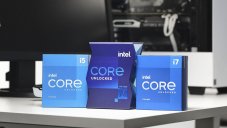What Causes Solid State Drives Failure?
Aadhya Khatri - Jan 11, 2021

With that in mind, here are the most common reasons that can cause solid-state drive failures.
When any data storage device- be it HDD, memory card, or SSD break down, it takes all of your data with it. Lately, many users have switched to SSDs for storing their valuable files because these devices are more reliable than traditional hard drives. However, no matter how expensive or robust your SSD is, no device is immune from failure and subsequent data loss. It is true that unlike hard disk drives, the improved solid-state drive works on flash technology and is not vulnerable to mechanical issues. But this doesn’t make it failure-proof. The latest NVMe SSDs provides reliable data storage solution but they are still prone to sudden crashes and data loss.
Solid State Drives (SSDs) have gained popularity because they don’t have moving parts like traditional HDDs. SSDs are also more fast, reliable, and energy-efficient. The platters found in HDDs are missing in SSD because these drives use a series of NAND flash memory chips. So, SSDs don’t crash due to malfunctioning of the moving parts but their capacitor and power supplies are vulnerable to failure due to power surge or a power failure. It means that even if you’re one of the best devices like WD SSD or LaCie rugged SSD, there are chances of unexpected failure and data loss.

Unlike HDD that gives clear warning signs of failure, SSDs often crash all of a sudden. But even if your HDD or SSD is dead, data recovery companies offer services like LaCie data recovery to help users retrieve their critical data. However, prevention is always better than cure, so it’s best to identify causes of SSD failure and take measures to avoid them. With that in mind, here are the most common reasons that can cause solid-state drive failures.
Physical Faults with Drive Components
Even if SSDs don’t fail due to malfunctioning of the moving parts, their other components are still susceptible to physical damages. Sometimes, the components could fail due to the manufacturer’s faults while often they fail due to misuse. Physical faults usually lead to electronic failures in the drive and then render the drive useless. The components could also get damaged due to power surge or power failure. Besides these reasons, SSD could also suffer wear and tear due to excessive use or exposure to extreme heat or moisture. Also, if you accidentally drop or knock the drive heavily, your SSD may suffer damage.
Drive Firmware Upgrade Failure
SSD firmware is complex and many users encounter SSD failure due to firmware update failure. Users upgrade their SSD’s firmware to improve its performance. However, a slight mistake in this process such as an interruption or failure in completing the process may result in SSD failure and data loss.
Data Corruption
Physical damages are not the only cause of SSD breakdown. Your SSD may also experience data corruption due to logical issues, such as when the SSD gets infected or corrupted due to viruses, malware, or bad sectors. These issues result in damaging some segments of the solid-state drive and ultimately lead to data loss.
>>>Tech Prophet Ming-Chi Kuo Predicts New Apple Products In 2021
Featured Stories

Gadgets - Aug 17, 2023
The Best UPS For Gaming PC In 2023

Gadgets - Aug 03, 2023
Full Gaming PC Setup Price In India 2023

Gadgets - Jul 19, 2023
How Gadgets Enhance Online Casino Gameplay

Gadgets - Jun 15, 2023
10 Best Mobile Gaming Gadgets 2023!

Gadgets - Apr 28, 2022
Three Reasons Why Investing in a Gaming Mouse Will Improve your Performance and...

Gadgets - Mar 18, 2022
The Rise of CSGO Gambling

Gadgets - Mar 19, 2021
Bip S Lite Review: One Of The Best Options Under Rs. 5000

Gadgets - Mar 19, 2021
Best Headphones For Gaming: Top Picks For Every Budget

Gadgets - Mar 19, 2021
How Mouse Works: Who Invented It And How Do Different Types Work?

Gadgets - Mar 17, 2021
Comments
Sort by Newest | Popular